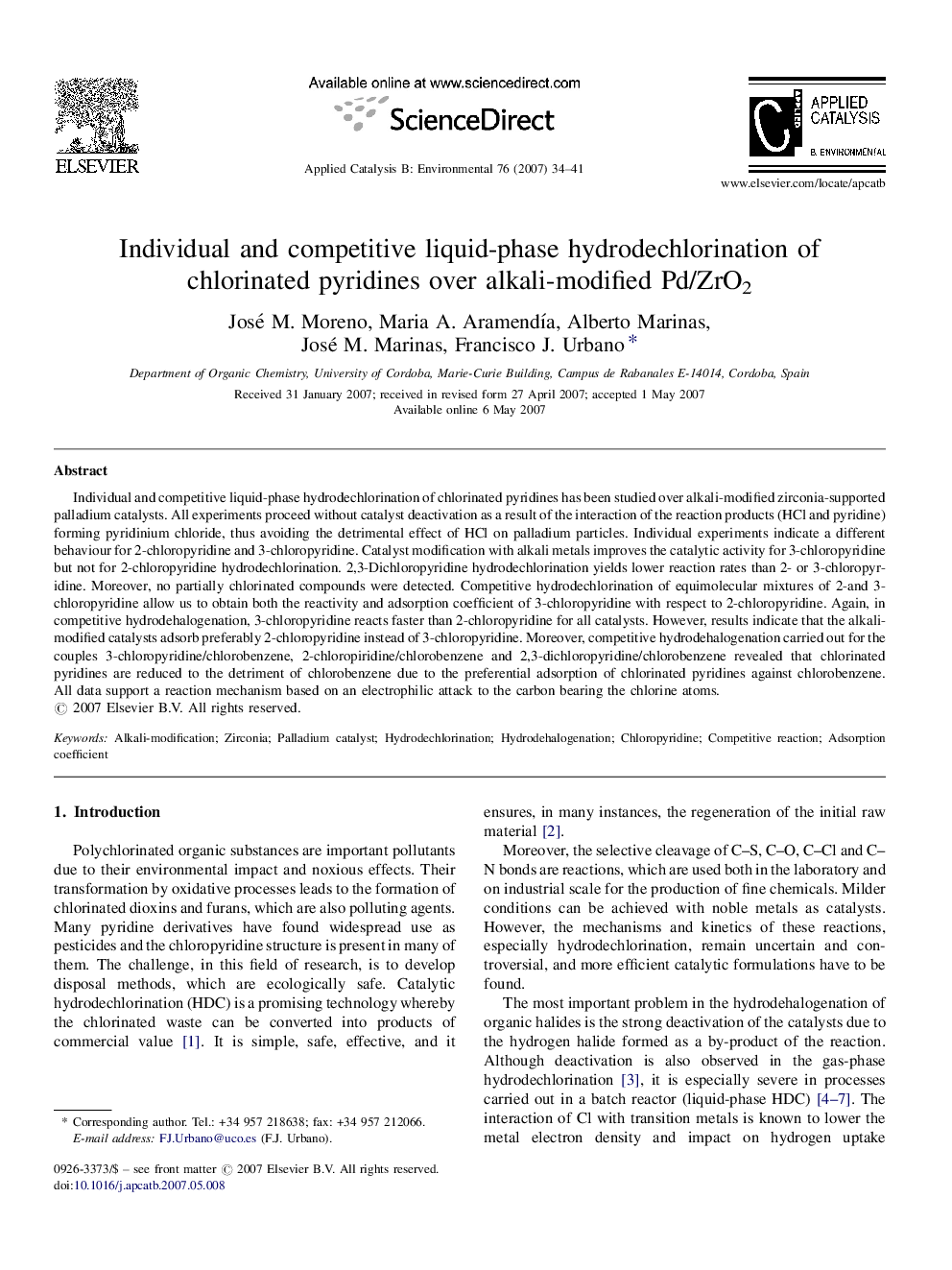| Article ID | Journal | Published Year | Pages | File Type |
|---|---|---|---|---|
| 48494 | Applied Catalysis B: Environmental | 2007 | 8 Pages |
Individual and competitive liquid-phase hydrodechlorination of chlorinated pyridines has been studied over alkali-modified zirconia-supported palladium catalysts. All experiments proceed without catalyst deactivation as a result of the interaction of the reaction products (HCl and pyridine) forming pyridinium chloride, thus avoiding the detrimental effect of HCl on palladium particles. Individual experiments indicate a different behaviour for 2-chloropyridine and 3-chloropyridine. Catalyst modification with alkali metals improves the catalytic activity for 3-chloropyridine but not for 2-chloropyridine hydrodechlorination. 2,3-Dichloropyridine hydrodechlorination yields lower reaction rates than 2- or 3-chloropyridine. Moreover, no partially chlorinated compounds were detected. Competitive hydrodechlorination of equimolecular mixtures of 2-and 3-chloropyridine allow us to obtain both the reactivity and adsorption coefficient of 3-chloropyridine with respect to 2-chloropyridine. Again, in competitive hydrodehalogenation, 3-chloropyridine reacts faster than 2-chloropyridine for all catalysts. However, results indicate that the alkali-modified catalysts adsorb preferably 2-chloropyridine instead of 3-chloropyridine. Moreover, competitive hydrodehalogenation carried out for the couples 3-chloropyridine/chlorobenzene, 2-chloropiridine/chlorobenzene and 2,3-dichloropyridine/chlorobenzene revealed that chlorinated pyridines are reduced to the detriment of chlorobenzene due to the preferential adsorption of chlorinated pyridines against chlorobenzene. All data support a reaction mechanism based on an electrophilic attack to the carbon bearing the chlorine atoms.
